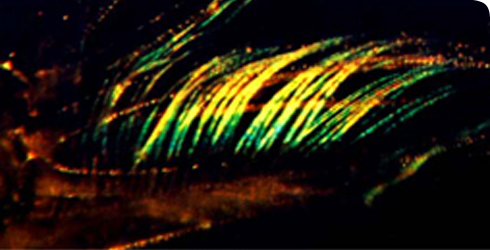Biology
Azygocypridina lowryi is a scavenger, feeding on fish and other carcasses on the sea floor. It plays an important role in recycling nutrients in the sea.
In the only experiment where Azygocypridina lowryi was kept alive in an aquarium, the individuals were observed to burrow into the sediment to around 1-2cm depth when lights were on.
They swim awkwardly, in a zig-zag (up and down) manner, reflecting the oar-like strokes taken by the second antenna as it protrudes from the shell.
Life cycle
The life cycle of Azygocypridina lowryi consists of five juvenile stages separated by moults and an adult stage following the terminal molt.
Iridescence
Hairs on the first antennae of Azygocypridina lowryi show spectacular iridescence due to diffraction gratings, like those found on a CD or in holograms on credit cards. This varies from violet to red, as the eye moves around the antenna. In more derived species of Cypridinidae, where this iridescence is far more pronounced in males than in females, it is used as a courtship display. However, its function in Azygocypridina lowryi is unknown
